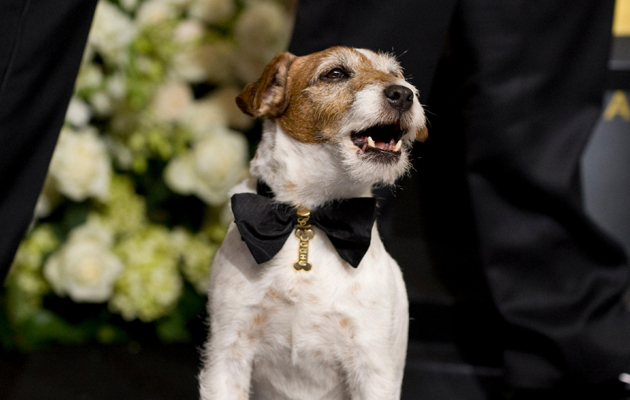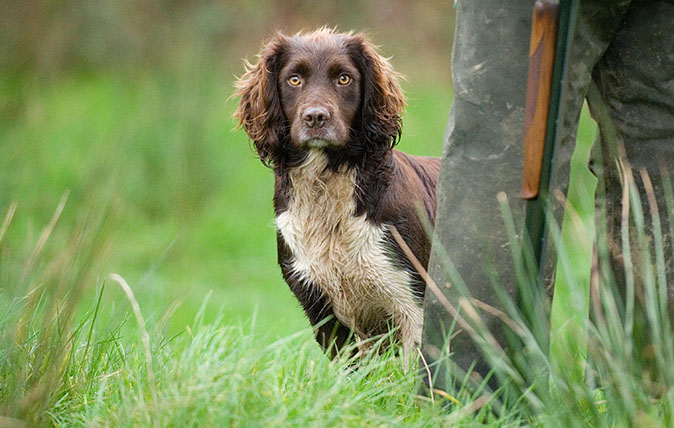Meet the animals who sustainably work Britain's most beautiful woodlands
From heavy horses to Longhorn cattle and snuffling truffle hounds, there’s no more satisfying way of managing our woodlands than with creatures great and small, concludes Vicky Liddell. Photographs by Millie Pilkington.


The soft jingle of chains and the clonking of timber, accompanied by a backdrop of birdsong, is all that can be heard drifting from the depths of an ancient woodland on the eastern edge of Dartmoor. A steaming horse is pulling a log into a clearing, yet, in four months’ time, there will be no trace that the horse was ever there.
Horse-logging, a traditional rural skill dating back thousands of years, is currently enjoying a resurgence of interest and is now recognised as the ultimate low-impact woodland tool.

John Williamson has lived and worked the woods of the Teign Valley all his life, first as a child, when he accompanied his father and uncle on their forestry contracts, and now as the owner of Burnicombe Wood. He and his wife, Clare, purchased the 10-acre, semi-natural wood in 2016.
‘Ours is a totally horse-powered woodland,’ John tells me as we follow Jens, their 11-year-old Belgian heavy-draft horse, over the Heltor Brook into a glade that’s carpeted with bluebells and wild garlic. ‘What we’re trying to do here is to tackle small, half-acre pockets in a patchwork over a 10-year cycle, gradually removing the non-native beech and coppicing the hazel. We’re using old methods of woodland management to preserve traditional crafts, such as charcoal-making, which benefit the overall biodiversity.

‘There’s been no widening of tracks or removal of gates,’ he adds, ‘so it’s completely suited to the horses, which can pick their way through obstacles, scarifying and fertilising as they go.’
The equine team, which also includes a seven-year-old cob named Louis, is capable of doing an eight-hour day and John often takes the horses to work at the local Fingle Woods, which is jointly owned by the Woodland Trust and National Trust, where the remains of an Iron Age hill fort required the sensitive extraction of Douglas fir.
‘Every woodland is different and every load size is different,’ he explains. ‘It’s about trust, putting the horse first in every situation and knowing when to say no.’
Sign up for the Country Life Newsletter
Exquisite houses, the beauty of Nature, and how to get the most from your life, straight to your inbox.

In neighbouring Somerset, some rather more menacing-looking beasts have sylvan business of their own. With their extra-ordinary handlebar horns, the English Longhorn cattle are unmistakeable, but what is unusual is their choice of grazing. Instead of chomping on lush pasture, these cows are being used by Forestry England (formerly known as the Forestry Commission) to help create the right habitat for rare butterflies such as the Duke of Burgundy. Russ Batchelor and his family have been grazing their cattle in the woods in the Blackdown Hills for five years, starting with 45 cows and two bulls and growing to a herd of 190.

‘Their ability to thrive on rough grazing makes them a useful conservation tool,’ notes Russ. ‘They trample the bracken, encourage primroses and stop the whole place turning into a jungle.’ Arriving in mid May, the cattle stay until the end of Sept-ember and, apart from a daily check by Russ or his father, live a totally free-range lifestyle. ‘They’re very resilient and even calve in the woods,’ he adds. ‘In five years, I’ve only had to intervene twice. The only problem is finding them.’
This independent spirit has occasionally led the cattle into trouble and they’ve sometimes had to be extricated from bogs and trees, but they’re very friendly. Jack, a 1¼-tonne bull that makes Russ feel ‘like a minnow’, likes nothing more than having his back scratched and will come when called.

These majestic beasts are something of a double conservation story—once a rare breed themselves, they’re now helping the environment of other wildlife, with the added benefit of a delicious end product.
From late summer onwards, work of a more secretive nature is being conducted in the beech woods of the South Downs, where Melissa Waddingham, truffle hunter and forager, and her labrador, Zebedee, have been sniffing out subterranean delicacies for more than a decade. Truffles prefer rich, shallow alkaline soils, usually at least 130ft above sea level, and Melissa knows exactly where to look.

Hunter and hound work as a team, with Melissa looking for indicators of their treasure, such as a burnt patch, and the dog picking up the scent, which he was introduced to as a puppy by rubbing truffle oil onto his mother’s teats. With luck, the pair will find the black, warty summer truffle, Tuber aestivum, with its distinctive white-marble pattern inside, or the darker but closely related Burgundy truffle.
‘I use a labrador because they’re loyal, greedy and eager to please, but any working dog can be taught to hunt out truffles,’ reveals Melissa. ‘It’s all down to the training.’
Although truffles often exchange hands for large sums, Melissa prefers to share her finds among her friends and is more interested in ‘rewilding the public and educating them in sustainable woodland management’.

According to the old forester’s saying, ‘a wood that pays is a wood that stays’ and, with more than half of the UK’s small woodlands in a poor or neglected condition, their management has never been so important. Animals play an important role and, for woodsman Duncan MacNeil, from Northumberland, there’s no better alternative: ‘You can’t speak to a tractor, but a horse is like an old friend.’

Credit: Sarah Farnsworth/Country Life
Fox-red labradors: Why red is the new black
From russet red to ever-so-slightly blushed, the fox-red is growing in popularity across the country sporting world. However, the gundog

8 famous Jack Russell terriers (and their owners)
Top terriers.

Tibetan terriers: Friend to the famous, lovably lively and perhaps the Kennel Club's best-kept secret
They have a starry following, but characterful Tibetan terriers are still a well-kept secret. Emma Hughes meets the best dog

The Labrador: The world’s favourite dog
Ben Fogle traces the illustrious history of the world’s favourite dog, the Labrador.

Which breed makes the best gundog? The pros and cons of labradors, spaniels, terriers and more
Whether you own labradors, springers, cockers or a mix of all three, debate over which gundog is best has raged
Country Life is unlike any other magazine: the only glossy weekly on the newsstand and the only magazine that has been guest-edited by HRH The King not once, but twice. It is a celebration of modern rural life and all its diverse joys and pleasures — that was first published in Queen Victoria's Diamond Jubilee year. Our eclectic mixture of witty and informative content — from the most up-to-date property news and commentary and a coveted glimpse inside some of the UK's best houses and gardens, to gardening, the arts and interior design, written by experts in their field — still cannot be found in print or online, anywhere else.
-
 The Business Class product that spawned a generation of knock-offs: What it’s like to fly in Qatar Airways’ Qsuite cabin
The Business Class product that spawned a generation of knock-offs: What it’s like to fly in Qatar Airways’ Qsuite cabinQatar Airways’ Qsuite cabin has been setting the standard for Business Class travel since it was introduced in 2017.
By Rosie Paterson
-
 Six of the best Clematis montanas that every garden needs
Six of the best Clematis montanas that every garden needsClematis montana is easy to grow and look after, and is considered by some to be 'the most graceful and floriferous of all'.
By Charles Quest-Ritson